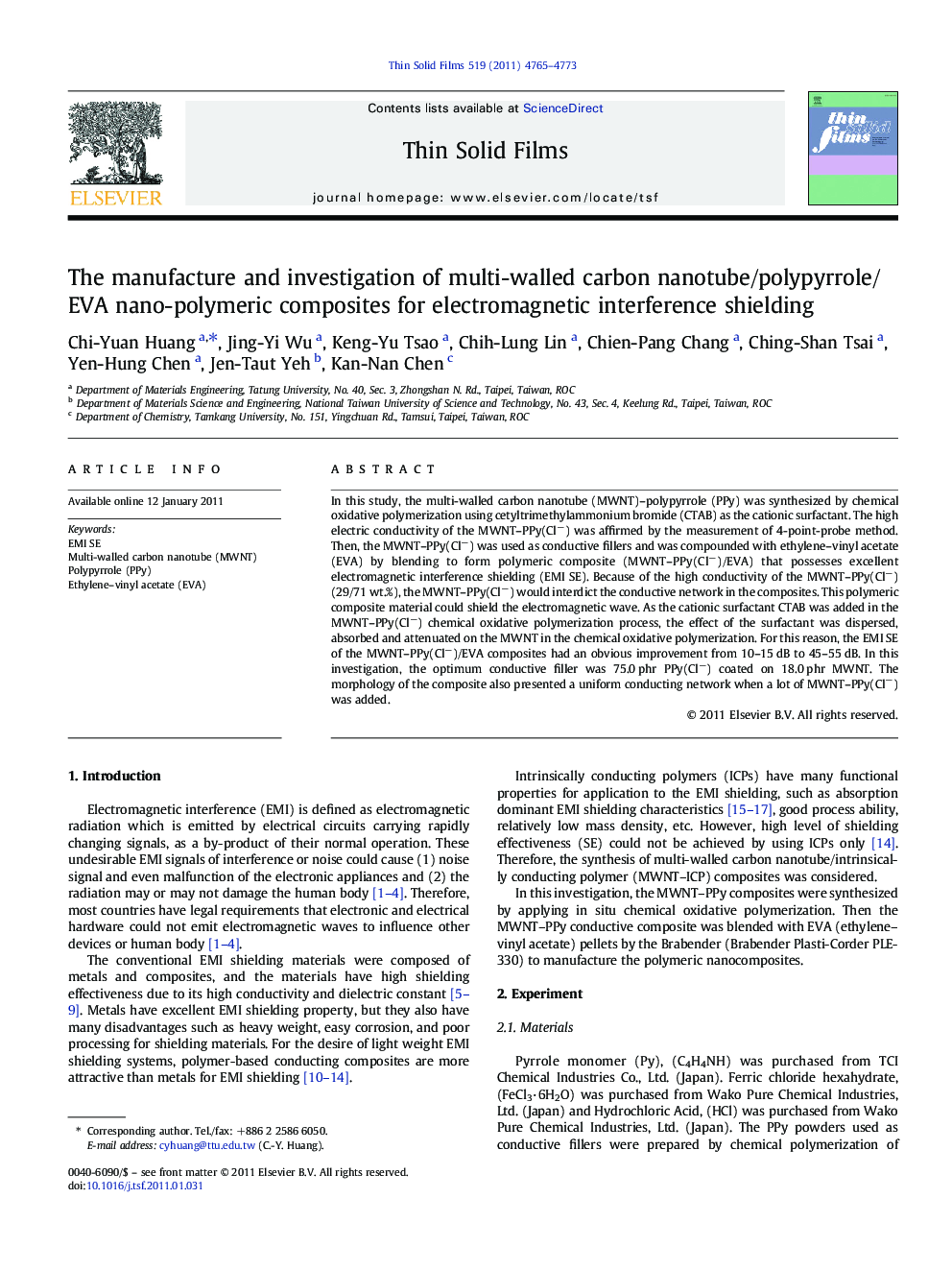| Article ID | Journal | Published Year | Pages | File Type |
|---|---|---|---|---|
| 1667677 | Thin Solid Films | 2011 | 9 Pages |
In this study, the multi-walled carbon nanotube (MWNT)–polypyrrole (PPy) was synthesized by chemical oxidative polymerization using cetyltrimethylammonium bromide (CTAB) as the cationic surfactant. The high electric conductivity of the MWNT–PPy(Cl−) was affirmed by the measurement of 4-point-probe method. Then, the MWNT–PPy(Cl−) was used as conductive fillers and was compounded with ethylene–vinyl acetate (EVA) by blending to form polymeric composite (MWNT–PPy(Cl−)/EVA) that possesses excellent electromagnetic interference shielding (EMI SE). Because of the high conductivity of the MWNT–PPy(Cl−) (29/71 wt.%), the MWNT–PPy(Cl−) would interdict the conductive network in the composites. This polymeric composite material could shield the electromagnetic wave. As the cationic surfactant CTAB was added in the MWNT–PPy(Cl−) chemical oxidative polymerization process, the effect of the surfactant was dispersed, absorbed and attenuated on the MWNT in the chemical oxidative polymerization. For this reason, the EMI SE of the MWNT–PPy(Cl−)/EVA composites had an obvious improvement from 10–15 dB to 45–55 dB. In this investigation, the optimum conductive filler was 75.0 phr PPy(Cl−) coated on 18.0 phr MWNT. The morphology of the composite also presented a uniform conducting network when a lot of MWNT–PPy(Cl−) was added.
